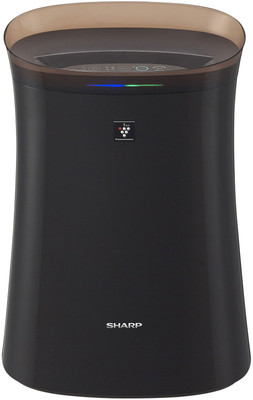
While you might not have much control over the outdoor air quality getting worse, you can make a difference in the air quality inside your home by using an air purifier. This is especially important if you live in a big city or a moderately-sized one. We understand that picking the right air purifier from all the options available can be confusing. There are a lot of things to think about, like how well it works, how much it costs to keep it running, the different types of filters it uses, and more.
But don't worry, we're here to help. We at Digit have given you expert recommendations on buying the best air purifier that serves your needs across various price segments and features. We also have a quick reference air purifier buying guide at the bottom of this list of top 10 Air Purifiers to buy in India, to help you buy the right air purifier step by step.
Quick reference buying guide for air purifiers
What are PM (particulate matter) values and which ones matter the most?
When it comes to air purifiers, they are most effective at filtering out the smaller particles that can cause harm to our health. While all particle sizes, such as PM10, PM2.5, and PM1.0, can have negative effects, the smaller particles tend to be more concerning.
PM2.5 and PM1.0 particles are particularly important to filter out because they are small enough to get deep into our lungs when we breathe. These tiny particles can carry harmful substances and pollutants that can cause respiratory issues, allergies, and other health problems. Since they're smaller, they can also stay in the air for longer periods, making it more likely for us to breathe them in.
While PM10 particles are larger and can be seen more easily, they are not as harmful when it comes to air quality indoors. They can irritate, especially in high concentrations, but they are less likely to reach deep into our respiratory system compared to the smaller particles. In summary, air purifiers are most important for filtering out PM2.5 and PM1.0 particles due to their potential to cause health problems and their ability to stay suspended in the air for longer durations. While addressing all particle sizes is beneficial, targeting these smaller particles can have a significant positive impact on indoor air quality and our well-being.
Types of filters in air purifiers
Air purifiers can have one, two, or even more filters inside them. Most home air purifiers in India use a HEPA filter. After the pre-filter, there's usually a HEPA or activated carbon filter. HEPA catches tiny particles, while carbon is good at trapping bad smells and gasses.
- Pre-Filter:Imagine this as the first shield of defense. It catches bigger particles like dust, pet hair, and stuff. This filter is usually washable and makes the other filters last longer
- HEPA Filters: These are special filters that can capture tiny particles floating in the air. They need to trap 99.97 per cent of these particles, which are as small as 0.3 micrometres, as the air goes through them. HEPA filters are rated differently, like E10, E11, E12, and more. The higher the rating, the better the filter works. Some filters, like H13 and H14, are great for home air purifiers, while others like U15, U16, and U17 are used in big industries. Keep in mind, that the better the filter, the more you might need to pay.
- Carbon FiltersCarbon Filters help remove odours, gases, and volatile organic compounds (VOCs) from the air. If an air purifier has both HEPA and Carbon filters, it's good. But do ask for how much carbon the filter has – this affects how well it works.
Filter replacements:
- Replacing Air Purifier Filters: Think of the filters in an air purifier like batteries in a toy. They don't last forever and need to be changed after some time. There are different kinds of filters, like pre-filters that you can wash every few weeks, and carbon filters that last longer than HEPA filters.
- The Replacement Schedule:Companies might say you need new filters every six months or a year. But it's better to ask how many hours the filters work before needing a change. This depends on how good the filter is, how polluted your area is, and how much you use the air purifier each day.
- Ease of Replacing Filters:Some air purifiers make changing filters easy, like putting new batteries in a remote control. Others might be a bit tricky. Check if you can change the filters by yourself or if you need to call the company for help.
Smart Features and Sensor Accuracy
Newer air purifiers have cool tricks that make them even easier to use. Some can talk to your phone or other devices through the internet (IoT). This means you can control them from far away and see how clean your room's air is in real-time.
When you're picking an air purifier, see if it has built-in sensors and if it can show you how clean your air is on its screen or through an app.
The sensors inside might not be perfect, but they should at least align with the outdoor air quality. They usually show how many tiny particles (PM2.5) are in the air and the overall air quality (AQI). If they can also tell you about larger particles (PM10) and smelly stuff (VOC), that's even better.













